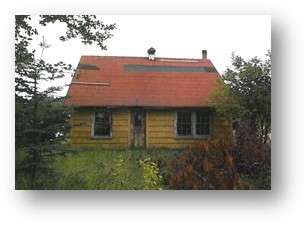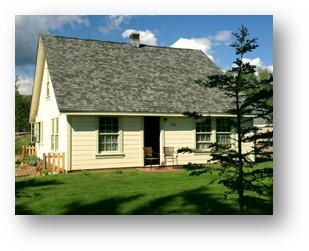Federal Tax Credits
NOTICE: As of August 15, 2023, all historic preservation certification applications must be submitted electronically, both new applications submitted to State Historic Preservation Offices (SHPOs) and materials submitted to the NPS in response to requests for additional information.
More information can be found here:
https://www.nps.gov/subjects/taxincentives/hpca-electronic-submission.htm
Updated Electronic Submission Requirements to Alaska SHPO:
- Please follow all updated instructions provided by the NPS. If not in conformance, the application will be returned to the applicant for correction prior to SHPO review.
- All submissions to our office must be provided in electronic format.
- Electronic files must be sent via email or delivered on a USB flash drive. Hard copies of the application will not be accepted.
- A cover letter should accompany the USB flash drive to identify the project being submitted to our office.
- Applications can be delivered by USPS mail or mailing service, or hand delivery during business hours, to:
Alaska State Historic Preservation Office
Office of History & Archaeology
550 West 7th Avenue, Suite 1310
Anchorage, AK 99501-3561
For any questions, please contact OHA by e-mail at dnr.oha@alaska.gov or (907) 269-8721.


The Federal Historic Rehabilitation Tax Credit is a useful incentive for encouraging the preservation of the state's historic buildings. Nationwide, over 43,000 projects have been completed since its inception in 1976, and the program has generated over $89.97 billion in the rehabilitation of income-producing historic projects. The largest federal program specifically supporting historic preservation, the historic tax credit also generates much needed jobs, 106,846 in 2017 alone, enhances property values in older communities, creates affordable housing, and augments revenue for Federal, state, and local Governments. The program has been instrumental in preserving historic places that give cities, towns, and communities their special character.
On December 22, 2017, Public Law No: 115-97 (Pub. L. 115-97) was signed and enacted, amending the Internal Revenue Code to reduce tax rates and modify policies, credits, and deductions for individuals and businesses. Pub. L. 115-97 (Sec. 13402) modifies the 20% Historic Rehabilitation Tax Credit as well as provides certain transition rules. These and other changes to the Internal Revenue Code may affect a taxpayer's ability to use of the 20% Historic Tax Credit. Pub. L. 115-97 also repeals the 10% Rehabilitation Tax Credit for non-historic buildings. The text of Pub. L. 115-97 is available at www.congress.gov.
Applicants requesting historic preservation certifications by the National Park Service as well as others interested in the use of these tax credits are strongly advised to consult an accountant, tax attorney, or other professional tax adviser, legal counsel, or the Internal Revenue Service regarding the changes to the Internal Revenue Code related to Pub. L. 115-97.
The Federal Historic Rehabilitation Tax Credit program gives:
- A 20% tax credit to owners who rehabilitate certified historic buildings in accordance with the Secretary of the Interior's Standards for Rehabilitation. (Example: 20% of a $75,000 rehabilitation that follows the Standards = $15,000 federal tax credit.) It is recommended to contact a tax professional regarding the use of this tax credit.
How do I qualify?
There are four requirements for a project to become certified:
1. The property must be listed in the National Register of Historic Places, either individually or as a contributing property to a district.
2. Property must be income producing for at least five years following rehabilitation. This may include but not be limited to proposed uses such as hotel or bed and breakfast, restaurant or bar, retail, office, rental residential, industrial, or agricultural. Owner-occupied residential properties do not qualify.
3. The project must be substantial. This means the amount spent on "Qualified Rehabilitation Expenditures"* (QREs) must equal or be greater than the "Adjusted Basis" value** of the property.
*Qualified Rehabilitation Expenditures (QREs)can be soft or hard project development costs, and not necessarily reserved for historic character defining features of a property.
**Adjusted Basis value is an IRS term to determine the "value" of a historic property using this basic formula:
A – B – C + D = adjusted basis, whereas:
A = purchase price of the property (building and land)
B = cost of land at time of purchase
C = depreciation taken for an income-producing property
D = cost of any capital improvements made since purchase
4. The rehabilitation work must be done according to the Secretary of the Interior's Standards for Rehabilitation. For further information on how to interpret these Standards, please contact our office, visit the NPS website, or hire a qualified architect or historic preservation consultant.
How do I apply for the credit?
The National Park Service requires that you work with the State Historic Preservation Office (SHPO). We strongly recommend that you submit an application before starting work. Any work you begin without prior NPS approval is done at your own risk. Once you have begun work, changes to bring the project into conformance with the Secretary of the Interior's Standards for Rehabilitation can be difficult, expensive, or occasionally impossible to make.
The application is broken into three parts*:
Part 1 (Evaluation of Significance)
Part 2 (Description of Rehabilitation) | Amendment Form
Part 3 (Request for Certification of Completed Work)
Instructions for completing Historic Preservation Certification Application
*Some of these documents may not open within a web browser. We suggest downloading these documents and opening in Adobe Acrobat Reader outside of your web browser.
Feel free to contact us during any part of the process.
What rehabilitation work qualifies?
All work must meet the Secretary of the Interior's Standards for Rehabilitation or the tax credit cannot be taken on any portion of the work. We suggest also referencing the National Park Service Preservation Briefs which provide guidance on preserving, rehabilitating, and restoring historic buildings. The briefs are especially useful for tax credit applicants because they recommend methods and approaches for rehabilitation buildings that are consistent with their historic character.
Some examples of eligible work items include:
|
|
The purchase price of the building, site work (landscaping, sidewalks, fences, driveways, etc.), new additions, work on outbuildings, and the purchase and installation of moveable furnishings or equipment (window coverings, refrigerators, etc.) do not qualify for the credit.
When can I sell my rehabilitated building?
In order to avoid any recapture of the tax credit by the federal government, you must keep the building for least five years from the date you complete the project. The recapture amount ranges from 100% of the tax credit if the building is sold within the first year, to 20% of the credit if it is sold within the fifth year.
Completed Tax Credit Projects in Alaska
| Project Name | Location | Year Completed | Estimated Cost |
| Fairbanks City Hall/Old Federal Building | Fairbanks | 1984 | $5.7 Million |
| Wendler Building | Anchorage | 1985 | $352,044 |
| Tolovana Roadhouse | West of Fairbanks | 1990 | $30,500 |
| AEC Cottage No. 23 | Anchorage | 1991 | $120,000 |
| Loussac-Sogn Building | Anchorage | 1994 | $3,091,545 |
| Alaskan Hotel | Juneau | 1995 | $190,000 |
| St. George Hotel Phase 1 | St. George Island | 1994 | $60,000 |
| Ester Camp Mess Hall | Ester | 1998 | $88,204 |
| Ester Camp Assay Office | Ester | 1996 | $10,177 |
| F.E. Company Housing | Fairbanks | 1998 | $185,625 |
| Mackinnon Apartments | Juneau | 2001 | $2,847,246 |
| Seward Railroad Depot | Seward | 2002 | $701,821 |
| Brown & Hawkins Store | Seward | 2005 | $235,000 |
| Brown & Hawkins Store | Seward | 2009 | $65,495 |
| Campbell House | Palmer | 2013 | $65,495 |
| Rudy-Kodzoff House | Juneau | 2016 | $90,000 |
